As a high school science teacher, I continually present my students with a vast amount of information often in the form of graphics. These graphics can be data presented as graphs, tables, and diagrams. My students use this information to gain a deeper understanding of the scientific concepts that are being addressed in the classroom. Very little thought is given as to the extensive amount of work that scientists and researchers had to devote in gathering this information out in the field.
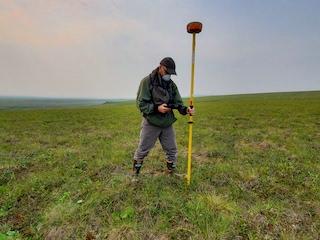 Systems Ecology Lab Technician, Ryan Cody, plotting GPS data at Toolik Field Station.
Systems Ecology Lab Technician, Ryan Cody, plotting GPS data at Toolik Field Station.
Field research is hard work! As I gain firsthand experience out in the field, I have had to prepare myself for the mental and physical challenges that I am presented with. In order to gather data, researchers have to leave the comfort of their homes and families for as long as months at a time. This is never an easy thing to do, regardless of the work that you do.
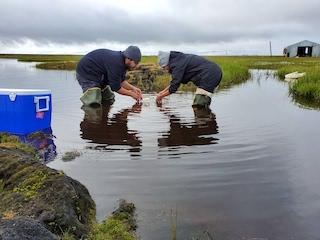 Undergraduate Students, Chris Sandoval & Paris Velasquez, conduct an aquatic chemistry experiment outside of the Barrow Arctic Research Center.
Undergraduate Students, Chris Sandoval & Paris Velasquez, conduct an aquatic chemistry experiment outside of the Barrow Arctic Research Center.
When preparing to leave your home and enter a new environment, there is a large amount of preparation that has to take place. The equipment and clothing that I would be taking to the arctic was very different from what I currently use at home. I went from spending my summer dressing in shorts and sandals to wearing various layers of warm weather gear. Much of the work attire that I wear out in the field involves protection from extreme elements; such as cold, rain and wind.
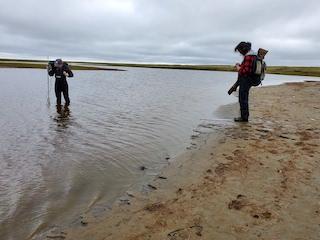 Doctoral Student, Alina Spera, & Graduate Student, Mariana Orejel, conduct measurements of a frigid local river in the arctic tundra.
Doctoral Student, Alina Spera, & Graduate Student, Mariana Orejel, conduct measurements of a frigid local river in the arctic tundra.
Field research requires an unprecedented amount of logistics in order to gather the right data for the projects that are being worked on. Scientists have to continually check their equipment and even troubleshoot when technology fails. This does not include the mental preparation required to do everything when the weather turns against you. Working in extreme cold, rain and even hazardous conditions (forest fires) are part of a researchers everyday life out in the field.
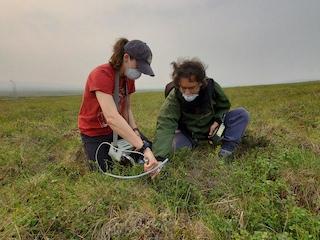 Doctoral student, Tabatha Fuson, & Postdoctoral Fellow, Sergio Vargas, gather spectrometry & photosynthesis data of arctic plant species. The masks are necessary due to the local forest fires in the Toolik Field Station area.
Doctoral student, Tabatha Fuson, & Postdoctoral Fellow, Sergio Vargas, gather spectrometry & photosynthesis data of arctic plant species. The masks are necessary due to the local forest fires in the Toolik Field Station area.
Why do scientists put themselves in such positions? The answer is quite simple. The science is just that important. Being able to gather data and piece together scientific concepts at a larger spectrum is what drives researchers to continue doing what they do. Next time you read a scientific article or look at a graph stop and think about the tremendous amount of work and time that the scientific community put in for you to have this information.
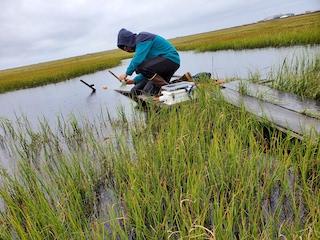 Undergraduate student, Hector Dominguez, gathers water samples from an arctic pond.
Undergraduate student, Hector Dominguez, gathers water samples from an arctic pond.


Comments
Add new comment